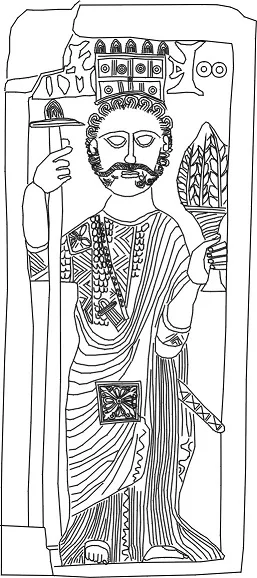The ancient kingdom of Himyar and its capital city, Zafar, are the focus of a new publication that documents the results of many years of excavation work in modern Yemen.

Over the course of twelve years, archaeologists from Heidelberg University uncovered major portions of the capital city of the last pre-Islamic power. Their main focus was on a large stone building with numerous sculptures and fragments. The work by Prof. Dr. Paul Yule and his team shed light on a largely unexplored chapter in history, putting a face on the period just before the advent of Islam. A new monograph featuring numerous illustrations introduces the finds from the digs.
With the support of the German Research Foundation, Paul Yule, adjunct professor in Heidelberg’s Faculty of Philosophy, conducted the excavations between 1998 and 2010 approx. 130 km southeast of Sanaa. Under layers of debris over a 120-hectare area, the researchers unearthed approx. 400 walled enclosures, tombs, fountains and buildings. Their finds included nearly 200 inscriptions and approx. 900 reliefs.
The artefacts shed light on a heretofore scantly studied epoch in world history. Himyar was the last great pre-Islamic power in what is now modern Yemen. During its zenith from the third to the fifth century A.D., the kingdom dominated all of Arabia, politically as well as militarily.
“The shift from polytheism to Judaism and Christianity began during that time, when the capital city of Zafar had 25,000 inhabitants. Among other things, the finds from the excavations prove how tightly the roots of Islam are tied to these two religions,“ says Prof. Yule.
The English-language monograph, “Zafar, Capital of Himyar”, presents the results of the excavations in the Zafar ruins. Yule explains that the pictures and panels document finds that show Himyar’s elegant architecture and an arts industry rich in graphical artistry. „In addition to these illustrations, we also present an overview of the current discussion on the historic-archaeological context,“ relates the publisher of the publication, which also features a summary in Arabic.
Header Image : Bronz statue of Dhamar Ali Yahbur. “King of Saba,dhu raydan,Hadrmawt and Yamant” (Himyarite Kingdom) late 3rd-early 4th century AD)
Contributing Source : Heidelberg University




